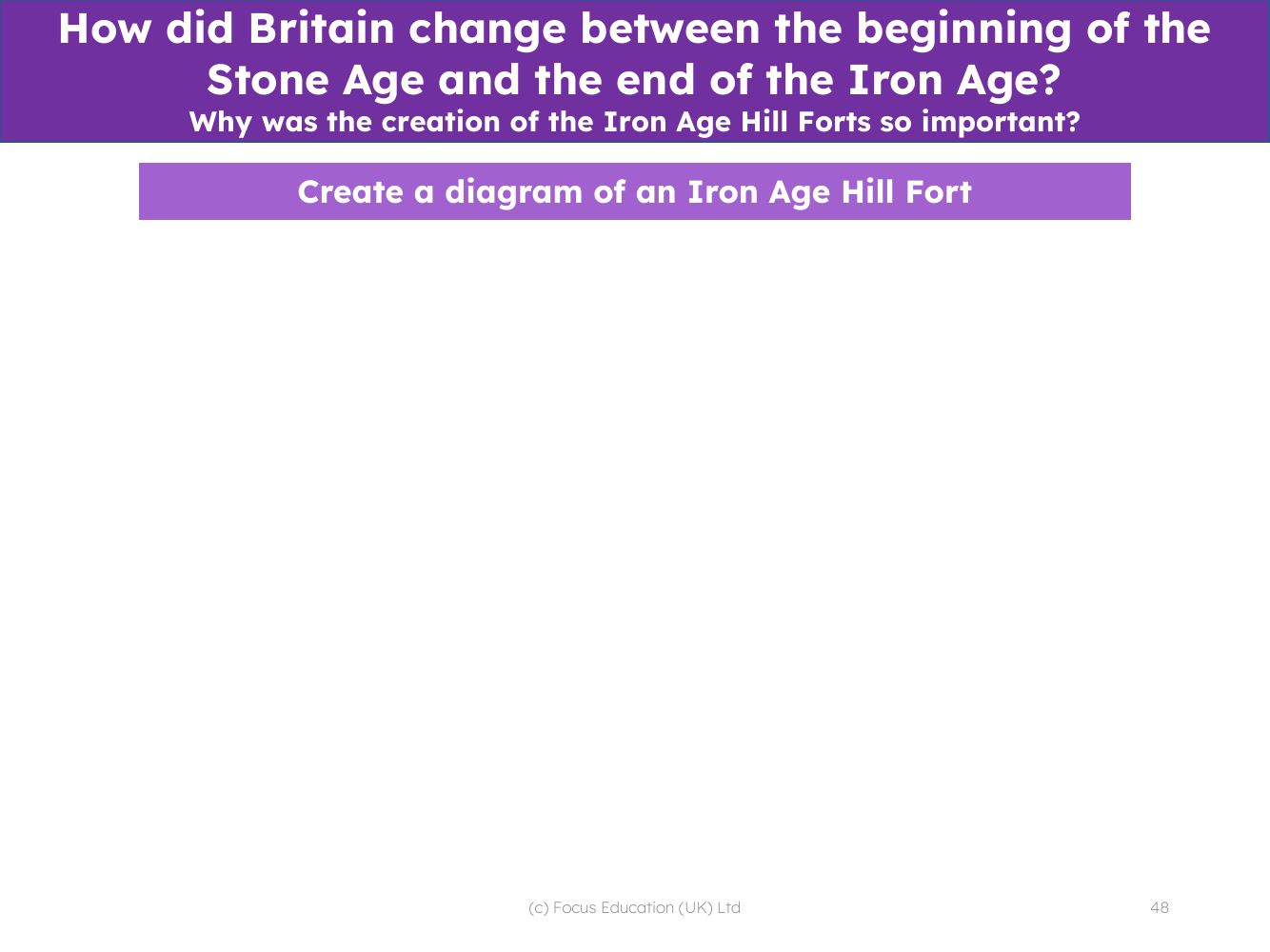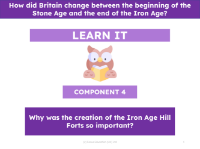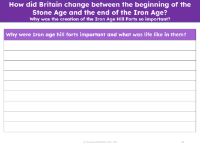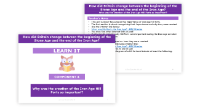Create a diagram of a hill fort

History Resource Description
Create an Iron Age Hill fort Diagram is an invaluable teaching resource for helping to explain the importance of Iron Age hill forts. This resource encourages students to explore the question through engaging practical activities, such as creating a diagram of a hill fort. This lesson will draw on previously taught knowledge of Iron Age history, including Bronze and early Iron Age, the construction of Maiden Castle, the development of hill forts in the South West of England, and their use as fortified refuges or small towns following Roman conquest. This activity is part of the lesson, “Why was the creation of the Iron Age hill forts so important?”.
This interactive teaching resource includes features that make lesson planning simpler for teachers. These features include a discussion of the evidence for hillforts from the period, such as wooden walls, thatched roofs, and external ditches, as well as details about the defensive advantages of a hill fort, like one or more lines of ramparts, such as at Wat's Dyke and Cadbury Castle, and linear earthworks. The resource also provides background information about the late Bronze and early Iron Age in Britain for a comprehensive understanding of the period, such as weapons and enemies the people of the time faced, and what was needed to attack and defend a hill fort.
Using this teaching resource, teachers can easily engage their students in exploring the key question by guiding them through the creation of a hill fort diagram. By providing students with a practical activity, they will gain a greater understanding of the shape and construction of hillforts, and what enabled them to be effective in protecting people, land, and tools in a complex and turbulent period. As an extension, teachers can also introduce archaeological evidence for hill forts, such as graves and temples, to further expand the students’ understanding of the period.
Features:
- Discussion of evidence from the period, such as wooden walls, thatched roofs, and external ditches
- An exploration of the defensive advantages of a hill fort, like one or more lines of ramparts, such as at Wat’s Dyke and Cadbury Castle
- Linear earthworks
- Background information about the late Bronze and early Iron Age in Britain, such as weapons and enemies the people of the time faced, and what is needed to attack and defend a hill fort
- Practical activities, such as creating a diagram of a hill fort
- Archaeological evidence for hill forts, such as graves and temples
This teaching resource not only expands the students' knowledge of Iron Age hill forts, but also makes lesson planning easier for teachers. By providing features like background information, discussions of evidence from the period, and practical activities, teachers can easily guide their students through an exploration of Iron Age hill forts. The interactive nature of this teaching resource also encourages students to think critically and deepen their understanding of the topic in an engaging and enjoyable way.





